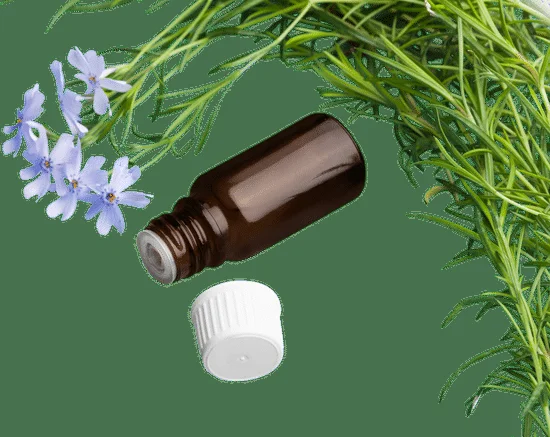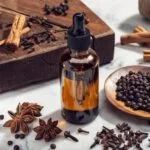Aromatherapy massage is a powerful and holistic approach to relaxation, healing, and overall well-being. Incorporating the use of essential oils, this therapeutic technique combines the benefits of touch and scent to promote deep relaxation, relieve stress, and enhance physical and emotional wellness. If you’re interested in learning how to give an aromatherapy massage yourself, this article will guide you through the steps necessary to create a soothing atmosphere and perform various techniques for an unforgettable experience.
The practice of aromatherapy dates back thousands of years and has been used cross-culturally as a natural remedy for various ailments. Aromatherapy massage harnesses the power of essential oils derived from plants to stimulate relaxation responses in the body. By inhaling or applying these concentrated extracts during a massage, their therapeutic properties can deeply penetrate your skin and travel into your bloodstream, providing numerous benefits to both your mind and body.
Research shows that aromatherapy massage can help alleviate physical discomforts such as muscle tension, headaches, arthritis pain, and insomnia. Additionally, it has been found effective in reducing anxiety, depression, and stress-related symptoms by promoting relaxation and boosting mood-elevating hormones like serotonin. Furthermore, it can improve circulation by enhancing blood flow throughout the body.
The beauty of aromatherapy massage lies not only in its physiological effects but also in its ability to create a tranquil environment that promotes inner peace. The gentle touch combined with the delightful scents resonates with our senses on a profound level.
Whether you desire personal self-care or want to share this nurturing experience with others, acquiring the knowledge on how to give an aromatherapy massage will allow you to enhance well-being in ways that extend far beyond just relieving tension.
In the following sections of this article, we will delve into the principles of aromatherapy massage while exploring topics such as selecting high-quality essential oils tailored for specific purposes and understanding proper techniques for different body parts. So, let’s get started on this journey towards relaxation, self-care, and overall rejuvenation.
Understanding Aromatherapy
Aromatherapy is a holistic healing practice that utilizes essential oils extracted from plants to enhance physical and emotional well-being. Understanding the principles of aromatherapy is integral to giving an effective aromatherapy massage.
The core principle of aromatherapy is that the aromatic compounds in essential oils have therapeutic properties that can positively affect the body, mind, and spirit. These oils can be used topically during a massage or inhaled through diffusion. When applied to the skin during a massage, the active compounds in the essential oils penetrate into the bloodstream and are carried throughout the body, promoting various therapeutic effects.
Essential oils used in aromatherapy massages are carefully selected based on their specific properties and their ability to address different health concerns. For example, lavender oil is known for its calming and relaxing properties, making it ideal for reducing stress and promoting sleep. Eucalyptus oil, on the other hand, has antimicrobial properties and can help with respiratory issues such as colds and congestion.
When choosing essential oils for a massage, it is important to consider both the physical benefits of the oil as well as personal preferences. Aromatherapists will often take into account factors such as scent preference, individual sensitivities, and any specific health concerns before selecting which essential oils to use.
Understanding these principles of aromatherapy allows massage therapists to tailor their treatments to meet their clients’ specific needs and goals. By selecting the right essential oils based on their therapeutic properties and personal preferences, therapists can create a truly personalized experience that enhances both relaxation and overall well-being.
| Benefit | Example Essential Oils |
|---|---|
| Calming/Relaxing | Lavender |
| Energizing/Uplifting | Lemon |
| Pain Relief | Peppermint |
| Respiratory Support | Eucalyptus |
Selecting the Right Essential Oils
When it comes to giving an aromatherapy massage, selecting the right essential oils is essential. High-quality essential oils not only enhance the overall experience but also provide various therapeutic benefits. It is crucial to understand the therapeutic properties of different oils and consider personal preferences to create a truly customized massage experience.
The first step in selecting the right essential oils is to familiarize yourself with their therapeutic properties. Each essential oil has its own unique set of benefits and effects on the body and mind. For example, lavender oil is known for its calming and relaxing properties, making it ideal for promoting stress relief and sleep.
On the other hand, eucalyptus oil has invigorating and decongestant properties, making it great for respiratory issues or muscle aches. By understanding these properties, you can choose oils that align with the specific needs or goals of the massage recipient.
In addition to therapeutic properties, personal preferences should also be taken into consideration when choosing essential oils for an aromatherapy massage. Some individuals may have a favorite scent or find certain scents more pleasing than others. It’s important to respect these preferences as they can greatly enhance relaxation and enjoyment during the massage. Engage in a conversation with the recipient beforehand to determine their favorite scents or any specific dislikes they may have when it comes to fragrances.
By considering both therapeutic properties and personal preferences, you can create a blend of essential oils that is tailor-made for each massage session. Keep in mind that high-quality oils are key to achieving optimal results. Look for reputable brands that offer pure essential oils without any additives or dilutions. Investing in high-quality oils ensures that you are using safe and effective products that will contribute to a truly beneficial aromatherapy massage experience.
Preparing for the Massage
Creating a comfortable and relaxing atmosphere is essential for an effective aromatherapy massage. This section will provide step-by-step instructions on how to prepare for the massage, ensuring a soothing and calming experience for both the giver and receiver.
Setting Up the Massage Area
Before starting the massage, it is important to designate a specific area that is quiet, clean, and free from distractions. Find a well-lit space where you can easily access everything you need during the massage. Make sure there is enough room for both you and the person receiving the massage to move comfortably.
Next, lay out clean sheets or towels on a comfortable surface, such as a massage table or a soft mat on the floor. Ensure that the temperature of the room is warm enough for the person receiving the massage to feel comfortable without feeling overheated. Consider using adjustable lighting or candles to create a soothing ambiance.
Ensuring Proper Ventilation
Proper ventilation is crucial during an aromatherapy massage to ensure that the scents from the essential oils do not become overwhelming. Open windows or use a fan to circulate fresh air in the room before starting the massage. This will help prevent any excessive build-up of scents that could cause discomfort or headaches.
If you are giving an aromatherapy massage in a small space with limited ventilation options, consider using an air purifier or diffuser with essential oils instead. This will help disperse the aroma evenly throughout the room without overpowering it.
By taking these steps to create a comfortable and relaxing atmosphere, you can enhance the overall experience of an aromatherapy massage and maximize its benefits for relaxation and well-being. It allows both you and your partner to fully immerse yourselves in this therapeutic practice, promoting deep relaxation and stress relief throughout your entire body.
Proper Techniques and Strokes
When it comes to giving an aromatherapy massage, using the correct techniques and strokes is essential in order to provide a relaxing and therapeutic experience. Here are some different massage techniques and strokes specific to aromatherapy massage that you can incorporate into your practice:
1. Effleurage: This is a gentle, gliding stroke that helps to warm up the muscles and distribute the essential oils evenly on the body. To perform effleurage, use long, sweeping strokes with your palms or fingertips. Start from the base of the neck or the top of the shoulders and move down towards the lower back or feet.
2. Petrissage: This technique involves kneading and squeezing muscles to release tension and promote blood circulation. Use your hands, fingers, or thumbs to apply pressure while gently lifting and squeezing the muscle tissue. You can use petrissage on larger muscle groups like the back or thighs.
3. Friction: Friction is a deeper massage technique that targets specific areas of tension in the muscles. It involves applying pressure using circular motions with your fingertips or palms. The friction technique can be particularly effective for relieving knots or trigger points in the muscles.
Incorporating these techniques into your aromatherapy massage routine can enhance relaxation, relieve muscle tension, and allow for better absorption of essential oils into the skin. Remember to always adjust your pressure based on the client’s comfort level, communicate throughout the session if necessary, and be mindful of any contraindications associated with certain strokes or techniques.
Using a combination of effleurage for warming up the muscles, petrissage for releasing tension, and friction for targeting specific areas can help create a well-rounded aromatherapy massage experience that promotes both physical and mental well-being.
Blending Essential Oils
When it comes to aromatherapy massage, the use of essential oils plays a crucial role in enhancing the therapeutic benefits. Creating customized essential oil blends allows you to tailor the massage experience to specific purposes such as relaxation, stress relief, or muscle relaxation. Here are some guidelines on how to blend essential oils effectively for maximum results.
1. Choose high-quality essential oils: Before blending, it’s important to select high-quality essential oils that are pure and free from additives or synthetic fragrances. Look for reputable brands that offer pure, organic, and therapeutic-grade oils to ensure their effectiveness and safety during the massage.
2. Understand the properties of essential oils: Each essential oil has its own unique properties and therapeutic benefits. Take the time to research and understand the properties of different oils before blending them. For example, lavender is known for its calming and relaxing effects, while peppermint provides a cooling sensation and helps relieve muscle tension.
Massage for Different Body Parts
When giving an aromatherapy massage, it is important to adapt the massage techniques based on the specific body part being massaged. Each body part has different muscle groups and sensitivity levels, requiring different types of strokes and pressure. Here are some guidelines on how to adapt the massage techniques for different body parts:
1. Back: The back is one of the largest areas that can benefit from an aromatherapy massage. Begin by applying a few drops of your chosen essential oil blend evenly across the back. Use long, sweeping strokes known as effleurage to warm up the muscles and apply pressure using your palms. You can also use petrissage movements like kneading and rolling to work out any tension or knots in the muscles.
2. Neck: The neck is a delicate area that requires gentle but firm pressure during a massage. Start by using your fingertips to apply light strokes along the sides of the neck, moving from top to bottom. You can then use circular motions with your thumbs to target any tightness in specific areas such as the base of the skull or behind the ears.
3. Shoulders: The shoulders often hold a lot of tension due to stress or poor posture. Begin by applying firm but gentle pressure with your fingers along both sides of the spine, moving outward towards the shoulder blades. Use circular motions with your thumbs or knuckles to release any knots or tightness in this area.
4. Feet: Massaging the feet can provide immense relaxation and relief. Apply a generous amount of essential oil blend onto your hands and then use long strokes along each foot from heel to toe using both hands simultaneously. Pay special attention to applying pressure with your thumbs at certain points such as the arches and balls of the feet.
Remember to always communicate with the person receiving the massage and adjust the pressure based on their comfort level. Additionally, it is important to have a basic understanding of human anatomy and how the different body parts are connected to ensure an effective and safe aromatherapy massage.
Safety and Precautions
Allergies and Sensitivities
When giving an aromatherapy massage, it is crucial to be aware of any allergies or sensitivities that the recipient may have. Essential oils are highly concentrated plant extracts and can potentially cause allergic reactions or skin irritations in some individuals. Before beginning the massage, it is essential to ask the recipient if they have any known allergies or sensitivities to specific plants or essential oils.
To avoid any adverse reactions, it is recommended to perform a patch test before applying essential oils directly on the skin. This involves diluting a drop of the chosen essential oil in a carrier oil and applying a small amount on the inner forearm or behind the ear.
Leave it for 24 hours and observe for any signs of redness, irritation, or itching. If there is no negative reaction after this period, it should be safe to proceed with the chosen blend during the massage.
Pregnancy
Pregnant individuals require extra caution when it comes to aromatherapy massages. Some essential oils are contraindicated during pregnancy due to their potential effects on hormones or uterine stimulation. It is important always to consult with a healthcare professional before providing an aromatherapy massage to someone who is pregnant.
During pregnancy, certain essential oils like clary sage, rosemary, sage, and juniper berry should be avoided as they can potentially trigger contractions or affect hormone levels. It is best to choose gentle essential oils that are considered safe for use during pregnancy, such as lavender, chamomile, ylang-ylang, and mandarin.
Contraindications
Apart from allergies and pregnancy concerns, there are other contraindications that need to be taken into account when giving an aromatherapy massage. People with certain medical conditions such as epilepsy should avoid stimulating essential oils like eucalyptus or rosemary, as they can potentially trigger seizures.
Individuals with high blood pressure should also be cautious with stimulating oils such as peppermint or rosemary, as they can increase blood pressure. Additionally, individuals with sensitive skin or open wounds should avoid massage techniques that involve deep pressure or friction, as it may cause excessive irritation or discomfort.
By being aware of these safety precautions and contraindications, the massage therapist can ensure a safe and enjoyable experience for the recipient, tailored to their specific needs and circumstances. Always remember to prioritize the well-being and comfort of the individual receiving the massage, and if in doubt about any aspect of aromatherapy massage safety, it is best to seek advice from a professional aromatherapist or healthcare provider.
Aftercare and Post-Massage Rituals
In conclusion, aftercare and post-massage rituals are essential for maximizing the benefits of an aromatherapy massage and promoting overall well-being. Following a massage, it is important to take time to relax and allow the body to fully absorb the effects of the treatment. To prolong the benefits of the massage, there are several recommendations that can be followed.
Firstly, practicing relaxation techniques can help to further calm the mind and body after a massage. Deep breathing exercises, meditation, or yoga can all be effective ways to continue promoting relaxation and stress relief. Taking a warm bath with aromatic bath salts infused with essential oils can also enhance the relaxation experience.
Additionally, incorporating self-care practices using aromatherapy can help to maintain the positive effects of the massage. Using essential oils in a diffuser at home can create a soothing atmosphere and provide ongoing aromatherapy benefits. Applying a few drops of diluted essential oil to pulse points throughout the day can also help to promote relaxation and balance.
Lastly, it is important to stay hydrated after an aromatherapy massage. Drinking plenty of water will help flush out toxins from the body and keep tissues hydrated. It is also beneficial to listen to your body’s needs – if you feel tired or need more rest, allow yourself time for adequate sleep.
By following these recommendations for aftercare and post-massage rituals, individuals can optimize their experience and maintain the sense of relaxation achieved during an aromatherapy massage. Engaging in self-care practices using aromatherapy on a regular basis can contribute to improved overall well-being and provide ongoing support for physical and emotional health.
Frequently Asked Questions
How Is Aromatherapy Massage Performed?
Aromatherapy massage is performed by combining the techniques of massage with the use of essential oils. The therapist begins by selecting the appropriate essential oils based on the client’s needs and preferences, as each oil has different therapeutic properties and scents. These essential oils are then diluted in a carrier oil to ensure safe application to the skin.
The therapist will apply this aromatic oil blend onto their hands before starting the massage. During the massage, they use various strokes and techniques to manipulate the muscles and provide relaxation or relieve tension. The aroma of the essential oils is inhaled during the treatment, enhancing relaxation and promoting well-being.
How Do I Start an Aromatherapy Massage?
To start an aromatherapy massage, it is important to first gather all the necessary supplies such as essential oils, carrier oil, clean towels, and a comfortable massage table or chair. Before beginning, it’s crucial to discuss any allergies or sensitivities to certain oils with your client to ensure their safety and comfort during the session.
Additionally, you should have a basic understanding of different essential oils and their therapeutic properties to select appropriate blends for your client’s specific needs. Once everything is prepared, establish a calm and relaxing environment with soft lighting and soothing music to create a peaceful atmosphere conducive to relaxation.
How Do You Perform Aromatherapy?
Performing aromatherapy involves using essential oils in various ways to enjoy their therapeutic benefits. One common method is through inhalation by adding a few drops of essential oil into a diffuser or bowl of hot water and inhaling deeply for respiratory relief or relaxation purposes. Another way is through topical application by diluting essential oils in carrier oils before applying them directly onto the skin for massages or skincare routines.
In this case, it is important to follow proper dilution ratios for safe usage as undiluted essential oils may cause irritation or adverse reactions. Additionally, some may choose to incorporate aromatherapy into their baths by adding suitable essential oils into warm bathwater for a soothing experience that can promote relaxation and stress relief.

Are you looking for a natural way to improve your health and wellbeing?
If so, aromatherapy may be the answer for you.





